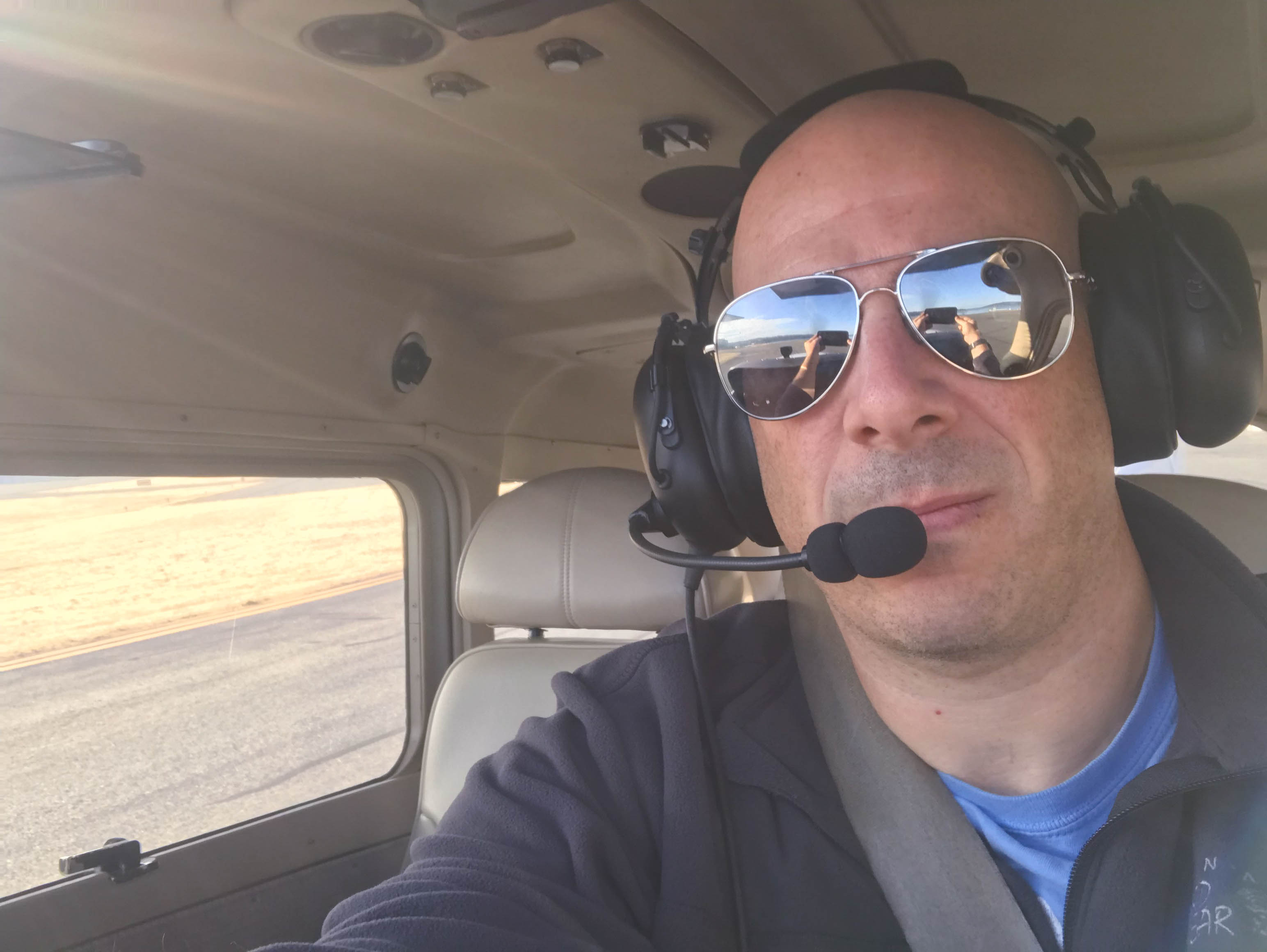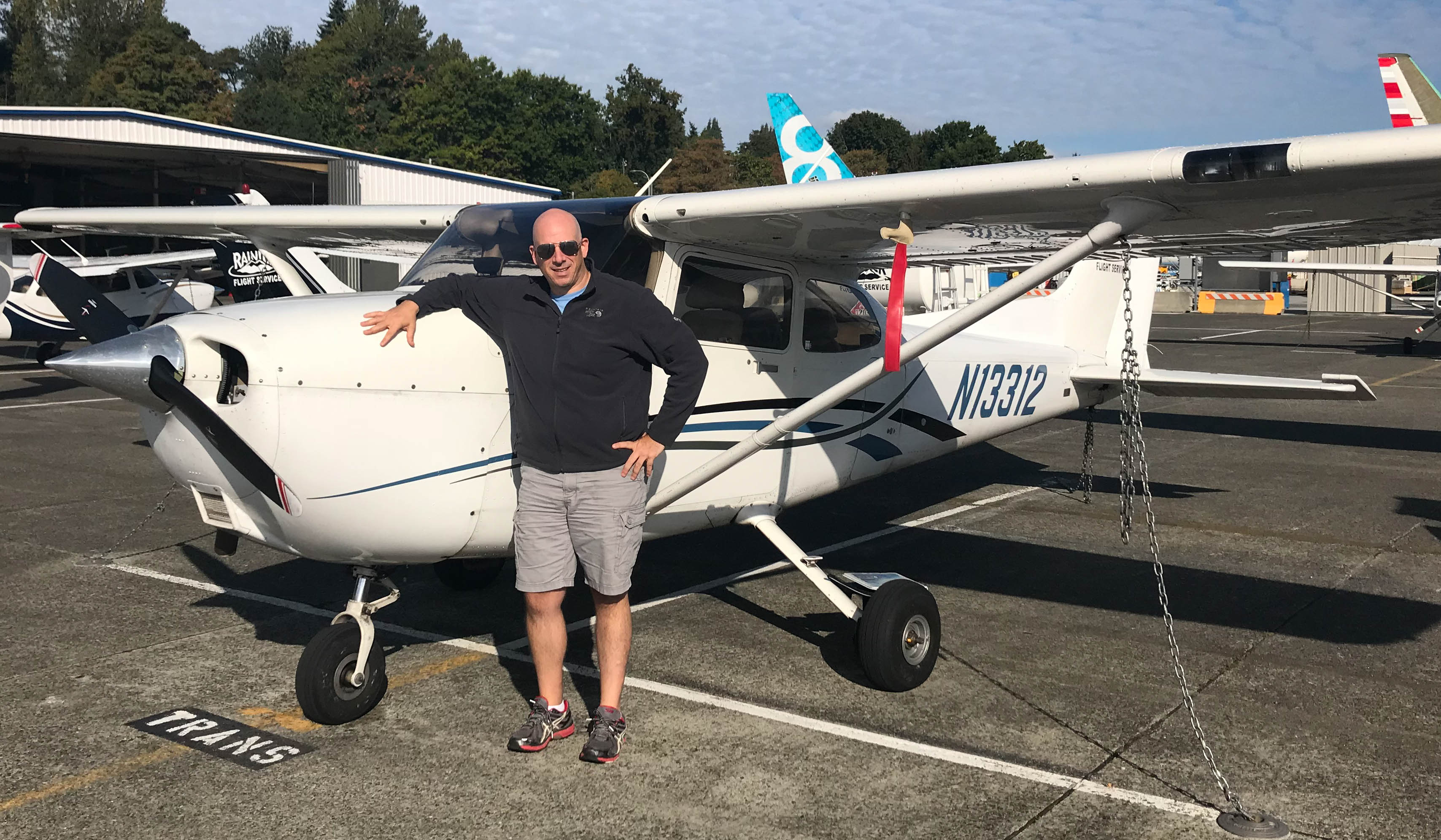Solo
As mentioned in my last post, I needed to pass my first stage check in order to solo. And I did. Unfortunately, I needed to wait a week to actually get the solo done. While I had an option after Sunday morning’s quick flight to pass the stage check, I was ready for a little break from the stress of new tests. My next appointment was two days later, but we had to cancel for weather. Saturday looked like the day.
All my flights at this point had moved over to Troy as my instructor. Troy would need to endorse me for solo, and the regulations are pretty clear. He needs to a) see all my maneuvers, b) go through a written test with me, and c) do a couple laps of the pattern with me. Essentially, the CFI’s license is on the line. If something happens to me or the airplane, Troy would be held accountable. We had exchanged a couple emails early in the week, and he indicated that it would probably take two flights to get this done. Flight one would be the maneuvers and written test, the second would be a couple laps of the pattern and then a solo. While I was in a hurry to get my solo done, I accepted this. I’d rather be safe than sorry.
When I got to the airport bright and early on Saturday, September 23rd, Troy met me in a briefing room. He said, “Ok, new plan. I saw some of your maneuvers last week. How about we fly out to the practice area, and I’ll put you through the rest. Then we’ll come back and review your written test. You have that done, right?” I answered in the affirmative. “Great. If we can get that done fast, we’ll solo you today.” “Great!” I said. But inside, I started churning. Mentally, I wasn’t prepared for this. I thought I’d be soloing tomorrow, not today. This was also a good insight into how Troy operates. As I’d learn, he is straight to business, and is willing to take the smart risks that a CFI has to take to keep student pilots moving forward.
We hopped into the plane after a solid preflight. We headed out to the practice area, where Troy put me through some slow flight and stalls. I was comfortable with these maneuvers, with the exception of the power-on stall, which I still found a little scary. We then came back to Renton for a couple laps in the pattern. This was critical: if I could do three laps and Troy didn’t have to do anything, he’d sign me off. While my landings weren’t perfect, they went well enough, and Troy kept his hands in his lap.
We taxied back to Rainier, and parked the airplane in a spot where we could get out again quickly. Troy yelled, “Let’s go!” and literally ran back to get a briefing room. We had about an hour left in our reservation. I had to demonstrate my knowledge through a written test, according to the regs. It’s a 4 pager that is fully open book. I had completed it over a couple of days during the week. Nothing really hard. Making sure you understand airport signs, emergency procedures, risk management, etc. We went over it quickly but thoroughly. Troy then asked me for my logbook, my medical certificate, and my student pilot certificate. After reviewing the certificates (both are required for students to solo), he then endorsed me to solo. There are a couple of entries that get made in the logbook. First, that I had sufficient ground knowledge, and then my solo endorsement. He looked up and said, “let’s go!”
It was now that it started to hit home. In just a few short moments, I’d be in an airplane by myself. No safety blanket. No one to correct my flawed landings. No one to take over in the case of an engine failure. No one to talk to the tower and correct me when I say something stupid. Just me. I walked slowly back towards the airplane and tried to ignore the rising fear.

Troy helped me get back and settled into the airplane. “Should I do a full run-up?” I asked. I was wondering whether a run-up (basically a quick test of the engine before takeoff) was necessary, given we had just flown. “Absolutely,” Troy said, “make it feel just like a regular flight.” That helped. Troy also said he’d have a handheld radio, and he’d be ready to help out if I got into trouble. I closed up the door, got my checklist out, and went through the engine start procedure. The checklists helped. In fact, as I started using them, the fear subsided. The routines took over.
“Renton Ground, Skyhawk 1-3-3-1-2 at Rainier with Tango, Student Pilot first solo, I’d like to stay in the pattern,” I said into the mic with far more confidence than I felt. “Skyhawk 1-3-3-1-2, Renton Ground. Very good. Taxi to Runway 1-6 via Alpha.” “1-6 via Alpha, 3-1-2”. And just like that, I was off. I taxied out to the runup area, did the runup, then got in line to takeoff and enter the traffic pattern. While I was waiting, I took a selfie, proving to the world that I was actually alone in the airplane. And then, it was my turn.
Interestingly, it was anticlimactic. I simply flew three takeoffs and landings, three more to add to the 100+ I had already done in training. The weather was great, there wasn’t a ton of other airplanes. My landings were pretty solid. Most people mention that the airplane feels more nimble, since there’s only one person in the plane. That was true, but it wasn’t so significant that I was thrown off.

I taxied back to Rainier, and parked the airplane. Got a quick high-five from Troy, and the requisite first solo picture. We put the airplane away, then I did something for the first time. I did my own entry in my logbook, with a number in the “PIC” column - “Pilot in Command”. I had 0.4 hours of PIC time! I also got a free t-shirt from the flight school.
Now that monkey’s off my back. Time for some stage two action!